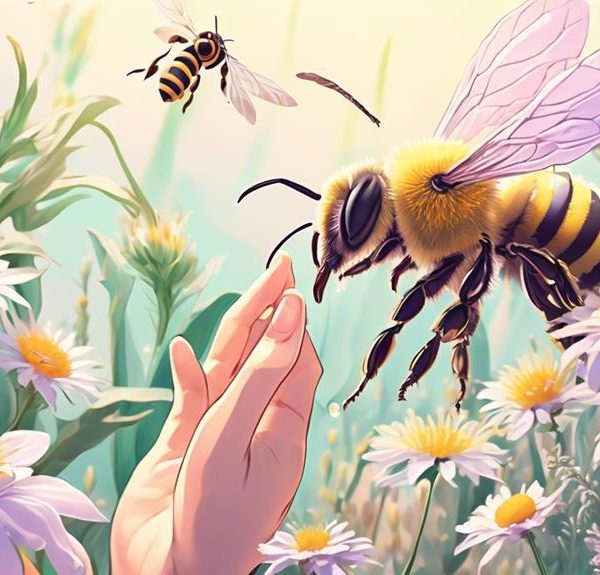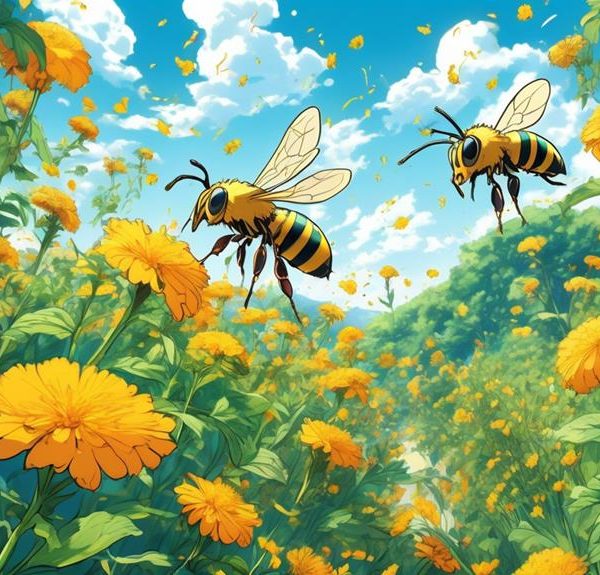Find out the surprising differences between sweat bees and sweat flies, and discover why they're attracted to your perspiration.
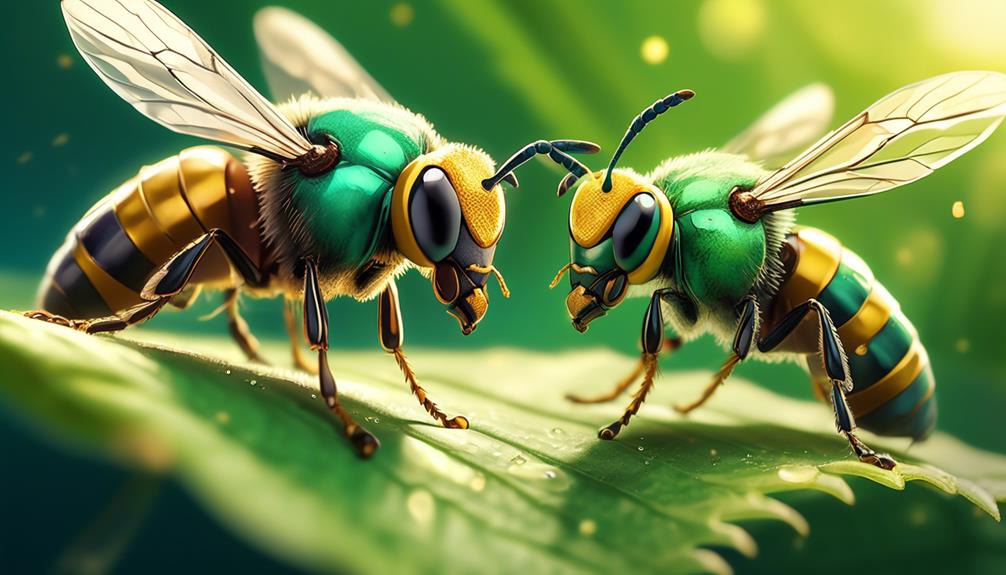
Sweat Bee Vs Sweat Fly
If you've ever had the privilege of being a living, breathing salt lick for a sweat bee or a sweat fly, you'll understand the unique joy of their company.
Now, you're probably wondering, is there really a difference between these two uninvited guests? Well, you're in for a surprise.
From their distinct physical characteristics to their dissimilar behaviors and ecological roles, sweat bees and sweat flies aren't as similar as you might think.
Although they both share a peculiar fondness for human perspiration, there's much more to each of these creatures than meets the eye.
By the end of this discussion, you'll have a newfound appreciation for these tiny critters, and you'll be able to tell which one is using you as its personal salt buffet.
Key Takeaways
- Sweat bees are small, metallic-colored bees attracted to gardens and meadows with vivid flowers, while sweat flies are attracted to perspiration as a source of nourishment.
- Sweat bees are not interested in human sweat itself but are attracted to the salt in perspiration, while sweat flies bite humans and lay eggs in running water.
- Sweat bees are solitary creatures that build and protect their own nests, often reusing existing tunnels for nest creation. On the other hand, sweat flies are social butterflies that gather in groups, usually around livestock or humans.
- Sweat bees are critical pollinators for flowering plants, transferring pollen from male to female flower parts. Sweat flies, on the other hand, serve as decomposers, breaking down organic matter and enriching the soil. Both bees and flies play vital roles in the ecosystem's balance and diversity.
Identifying Sweat Bees
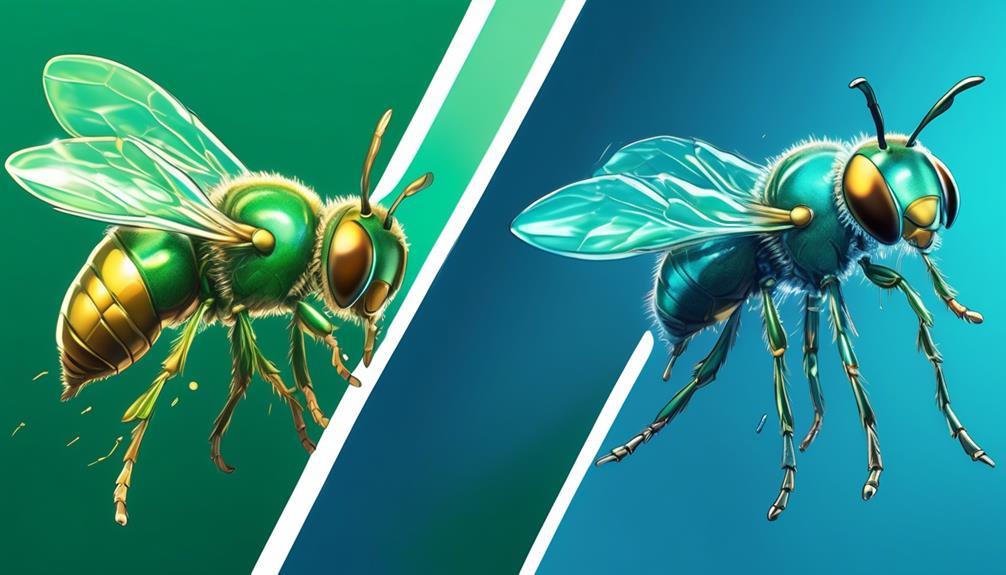
To identify a sweat bee, you'll first want to note its small size, typically between a quarter to half an inch long, and its metallic, often green or blue, coloring. They're regular visitors to gardens and meadows, attracted by the vivid flowers. Don't get confused by their name though, they're not interested in your sweat. Their name comes from their attraction to the salt in human perspiration.
You'll also want to observe their behavior. Unlike other bees, they're solitary creatures, shunning the hive life. Each female sweat bee builds and protects her own nest. They're not aggressive either. If you remain calm and avoid sudden movements, they're unlikely to sting.
Their nesting habits are another way to identify them. They prefer to nest in the ground, often in sandy or clay soil, and in sunny areas. If you spot tiny holes in bare patches of your garden, you might've sweat bees.
Understanding Sweat Fly Traits
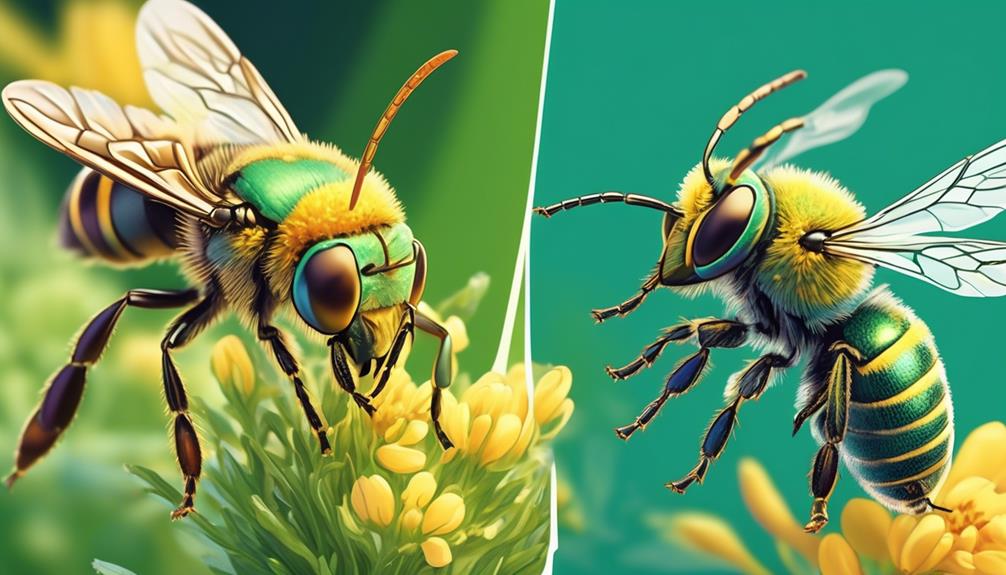
Diving into the world of sweat flies, you'll notice they're quite different from their sweat bee counterparts. These flies, officially known as Simuliidae, exhibit unique behaviors and characteristics that you might find intriguing.
Let's highlight three specific traits that set sweat flies apart:
- Attraction to Sweat: Sweat flies are notorious for their attraction to perspiration. They're drawn to the moisture and salt that human sweat provides, serving as an essential source of nourishment for them.
- Biting Tendencies: Unlike sweat bees that sting, sweat flies bite. Though it's usually harmless to humans, it can be quite a nuisance. Their bites can cause itching and minor irritation, so it's best to shoo them away when you can.
- Breeding in Water: Sweat flies have a unique breeding habit. They lay their eggs in running water, a trait not common among most flies. This makes rivers, streams, and even your backyard water fountain potential breeding grounds.
Sweat Bee Behavior Patterns
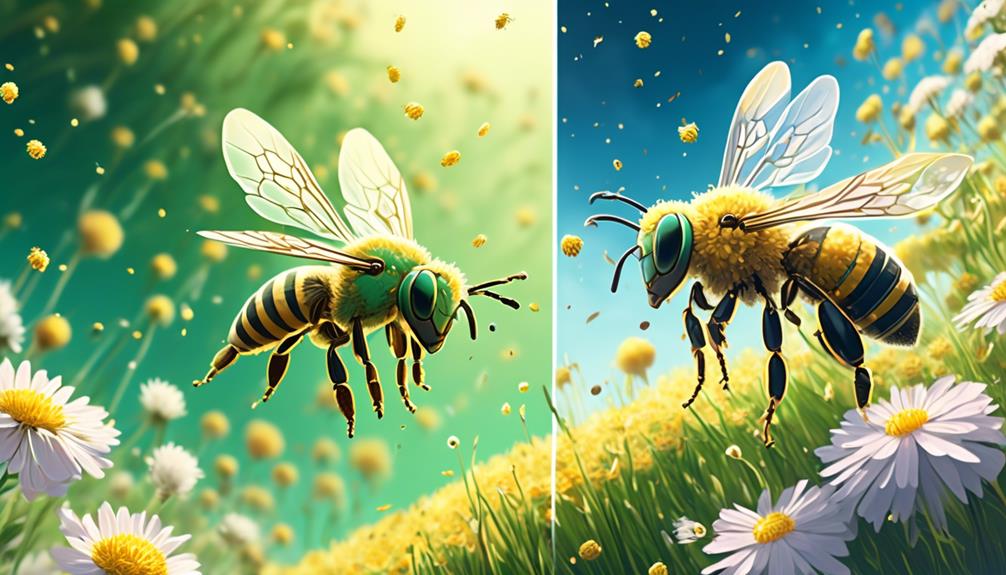
Switching gears to sweat bees, you'll find their behavior patterns are just as fascinating, yet distinctly different from those of sweat flies. Unlike sweat flies, sweat bees are solitary creatures. They don't live in colonies like honey bees. Instead, each female sweat bee builds and provisions her own nest.
One distinctive habit is their nesting behavior. They're ground-nesting bees, burrowing into the soil to create nests. They're also known to reuse existing tunnels, lessening their work. They'll usually choose a sunny spot with well-drained soil, where their eggs will be safe from flooding.
Another interesting trait is their attraction to sweat, hence the name. They're drawn to the salt contained in human sweat, and they're not shy about landing on your skin to get a taste. But don't worry, they're generally non-aggressive. They'll only sting if they feel threatened.
Their foraging patterns are also noteworthy. Sweat bees are polylectic, meaning they collect pollen from a wide variety of plants. This makes them vital for pollination. Despite their small size, they're industrious little creatures, playing a key role in our ecosystem.
Sweat Fly's Lifestyle Explored
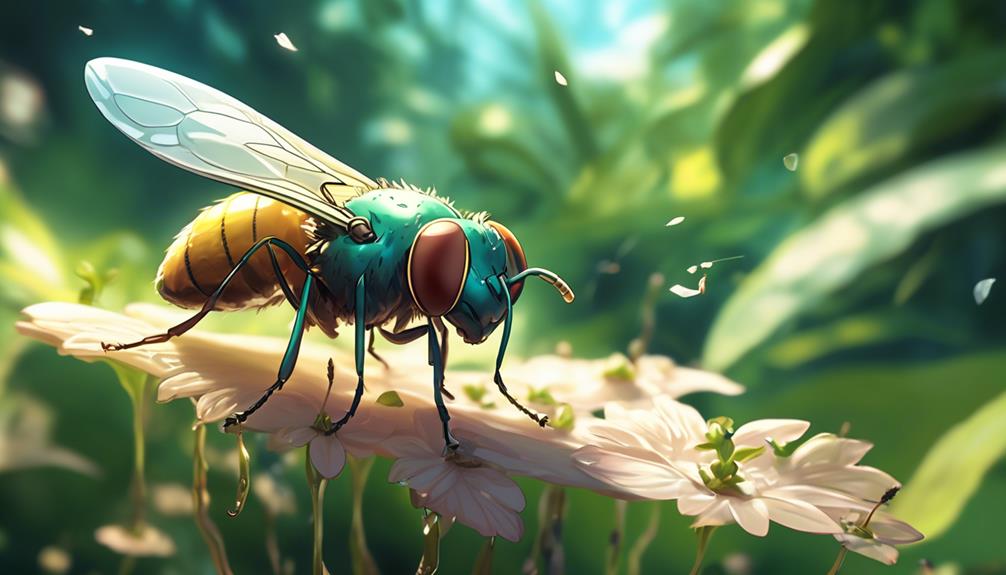
Now, let's delve into the world of sweat flies, whose lifestyle contrasts remarkably with that of sweat bees. Unlike the solitary nature of sweat bees, sweat flies are the social butterflies of the insect world. They revel in the company of their peers and won't give up an opportunity to mingle.
But what makes these flies particularly fascinating is their unusual attraction to sweat. Here are three interesting aspects of their lifestyle:
- Sweat Attraction: Sweat flies have unique sensory organs that allow them to detect the salt in your sweat. They're not after your blood, they just crave that salty goodness.
- Social Gathering: Sweat flies love to hang out in groups, usually buzzing around livestock or humans. They're party animals, and sweat is their favorite cocktail.
- Larval Development: Unlike sweat bees that lay their eggs in nests, sweat fly larvae develop in decaying matter, like dung or compost. It's a grim nursery, but hey, it works for them.
Ecological Impact: Bees Vs Flies

While the social dynamics and lifestyles of sweat bees and flies are fascinating, it's their ecological impact that truly underscores their significance in our world.
As a critical pollinator, the sweat bee has a role that you can't overlook. They're essential for the reproduction of many flowering plants. These tiny bees help maintain the balance and diversity of our ecosystem by transferring pollen from male to female flower parts.
On the other hand, you've got sweat flies. They're not exactly the pollinators bees are, but they're crucial in other ways. Sweat flies serve as decomposers, breaking down organic matter like animal waste and dead plants. This action enriches the soil, aiding in the growth of new plant life.
Both bees and flies play vital roles in the circle of life. They're not just part of our ecosystem; they're key to its survival. And while they may not be the most pleasant creatures to have around, their importance can't be denied.
Conclusion
So, you've learned about sweat bees and sweat flies!
Sweat bees are metallic, solitary creatures that love your sweat.
Unlike sweat bees, sweat flies are more social and prefer animal waste.
As for their ecological impact, bees are vital pollinators, while flies are decomposers.
So, while they may seem like pests, both have crucial roles to play.
So next time you're swatting away, remember their importance!

